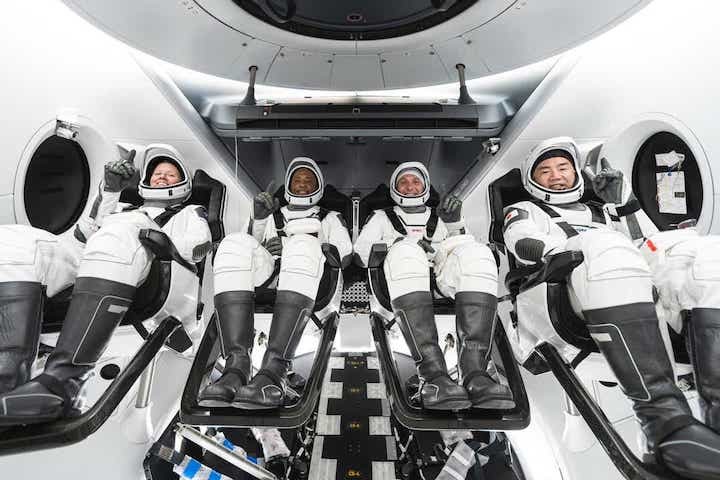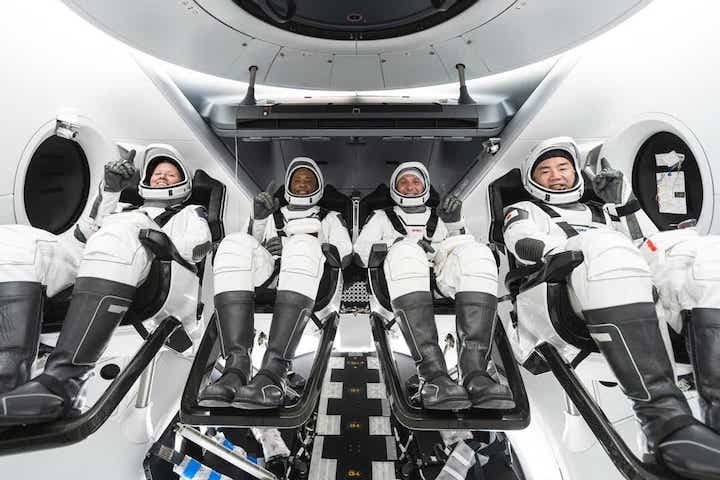NASA and SpaceX are targeting no earlier than Oct. 23 for the first operational flight with astronauts of the Crew Dragon spacecraft and Falcon 9 rocket to the International Space Station as a part of the agency’s Commercial Crew Program. NASA’s SpaceX Crew-1 mission will be the first of regular rotational missions to the space station following completion of NASA certification.
The mission will carry Crew Dragon commander Michael Hopkins, pilot Victor Glover, and mission specialist Shannon Walker, all of NASA, along with Japan Aerospace Exploration Agency (JAXA) mission specialist Soichi Noguchi for a six-month science mission aboard the orbiting laboratory following launch from Launch Complex 39A at NASA’s Kennedy Space Center in Florida.
Crew-1 will launch in late October to accommodate spacecraft traffic for the upcoming Soyuz crew rotation and best meet the needs of the International Space Station. Launch will follow the arrival of NASA astronaut Kate Rubins and cosmonauts Sergey Ryzhikov and Sergey Kud-Sverchkov of the Russian space agency Roscosmos aboard their Soyuz MS-17 spacecraft and the departure of NASA astronaut Chris Cassidy and cosmonauts Anatoly Ivanishin and Ivan Vagner from the space station. The launch timeframe also allows for a crew handover with NASA’s SpaceX Crew-2 mission next spring.
The Crew-1 mission is pending completion of data reviews and certification following NASA’s SpaceX Demo-2 test flight, which successfully launched NASA astronauts Robert Behnken and Douglas Hurley to the International Space Station on May 30 and returned them safely home with a splashdown off the Florida coast in the Gulf of Mexico on Aug. 2. Demo-2 was the first crewed flight test of a commercially-owned and operated human space system.
NASA certification of SpaceX’s crew transportation system allows the agency to regularly fly astronauts to the space station, ending sole reliance on Russia for space station access.
For almost 20 years, humans have continuously lived and worked aboard the International Space Station, advancing scientific knowledge and demonstrating new technologies that enable us to prepare for human exploration to the Moon and Mars.
NASA is enabling economic growth in low-Earth orbit to open access to space to more people, more science, and more companies than ever before.


